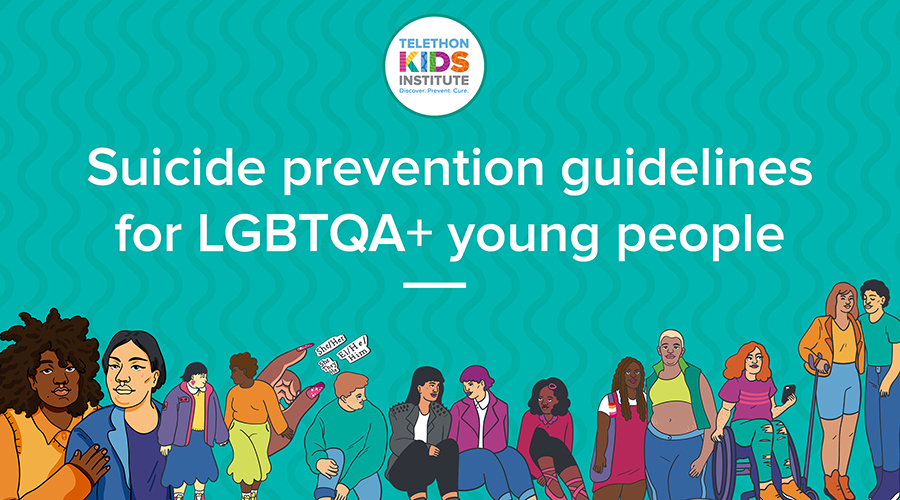Search
Research
Training Service Providers to work with Aboriginal and Torres Strait Islander LGBTQA+ youthThe goal of this project is to is to increase capacity of ACCO staff to work with Aboriginal and Torres Strait Islander LGBTQA+ youth and their families, with the longer-term goal of improving health service access among this population.
Research
Trans Pathways 2Trans Pathways is set to receive an update ahead of the ten-year anniversary of the release of this seminal study from The Kids Research Institute Australia.

News & Events
Poor access to mental health services linked to suicide hotspots: studyCommunities with poor access to mental health services are eight times more likely to be youth suicide hotspots, according to new The Kids Research Institute Australia research.

News & Events
Suicide prevention guidelines to drive better services for LGBTQA+ young peopleResearchers have developed Australia’s first comprehensive guidelines for clinical and community services supporting LGBTQA+ youth.

News & Events
Aboriginal researcher and psychiatrist named joint winner of national mental health prizePioneering Aboriginal psychiatrist, researcher and mental health champion Professor Helen Milroy has been named joint winner of the 2020 Australian Mental Health Prize.
Research
An evaluation of junior doctors’ experience in smoking cessation training in a rural mental health settingThe extent of lung hypoplasia impacts the survival and severity of Smoking prevalence remains high amongst people with mental illness, however, they are less likely to be screened for tobacco dependence and offered treatment to quit.
Research
Challenges in Accurately Assessing Prenatal Alcohol Exposure in a Study of Fetal Alcohol Spectrum Disorder in a Youth Detention CenterAccurately assessing prenatal alcohol consumption is exceptionally challenging when assessed retrospectively as part of a FASD assessment for a young person sentenced to detention
Research
Common Pathways to NSSI and Suicide Ideation: The Roles of Rumination and Self-CompassionThe salience of self-compassion offers promise for early intervention initiatives focusing on less judgmental or self-critical means of self-relation
Research
Persistent negative symptoms in individuals at Ultra High Risk for psychosisPersistent negative symptoms can be detected early, allowing for the identification of a subset of Ultra High Risk patients who are likely to have poor outcome
Research
The Impact of Externally Worn Diabetes Technology on Sexual Behavior and Activity, Body Image, and Anxiety in Type 1 DiabetesWearable technologies impact upon sexual activity and this influences the decision to adopt the technology
